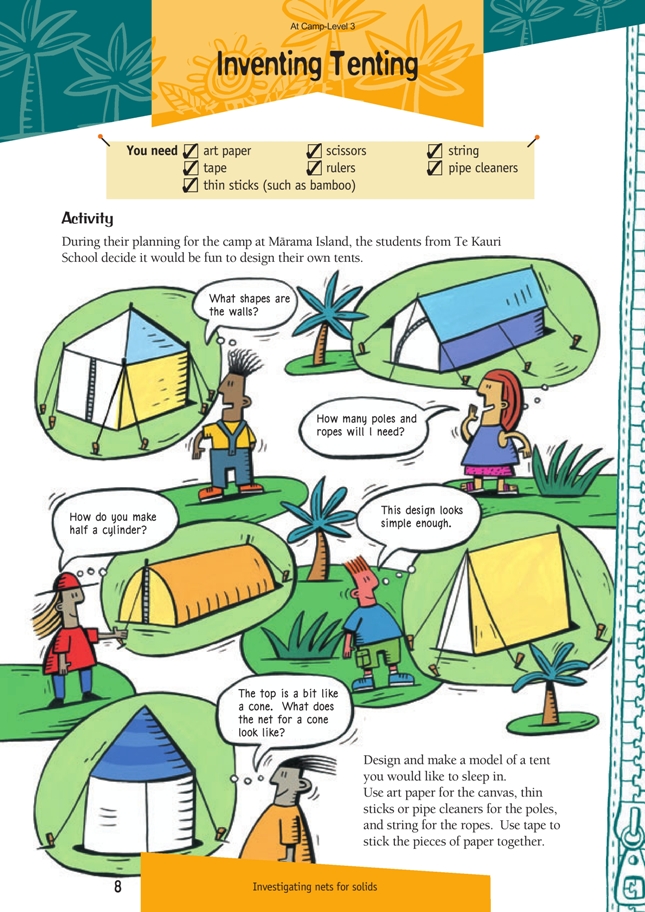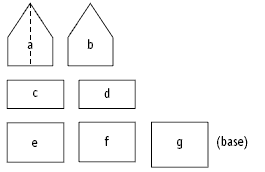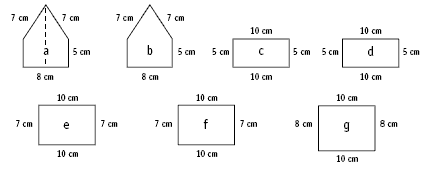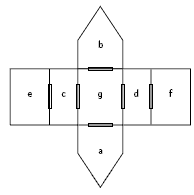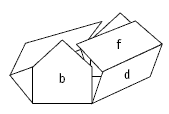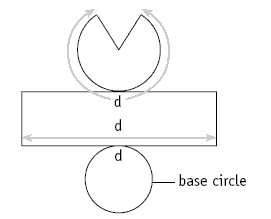This is a level 3 geometry activity from the Figure It Out theme series.
A PDF of the student activity is included.
Click on the image to enlarge it. Click again to close. Download PDF (413 KB)
make a model of a three dimensional shape
scissors, string, tape, rulers, pipe cleaners
FIO, Level 3, Theme: At Camp, Inventing Tenting, page 8
thin sticks (such as bamboo)
The tent designs will be three-dimensional solids. They will be polyhedra (solids with many faces) that have flat faces, or they will have curved surfaces, such as half-cylinders. Polyhedra are the easiest of the two types of tents to construct. Students could follow this process:
1. Sketch the tent they wish to make, for example:
2. Draw and label the faces of the tent:
3. Mark any sides that must be the same length:
4. Measure and cut out the faces and tape them together to form a net:
5. Redraw the net on a piece of paper and then fold the net up to form the tent shape:
6. Add poles (thin sticks or pipe cleaners) and ropes (string). The main difficulty with curved surfaces, such as cones and cylinders, is measuring and designing the curved edges, for example, making the tent at the bottom of page 8:
The distance around the outside of the part-circle must match the length of the side strip and the circumference of the base circle. The best way to make this net is to make the part-circle first and use string to measure the other lengths.
Answers to Activity
Practical activity
